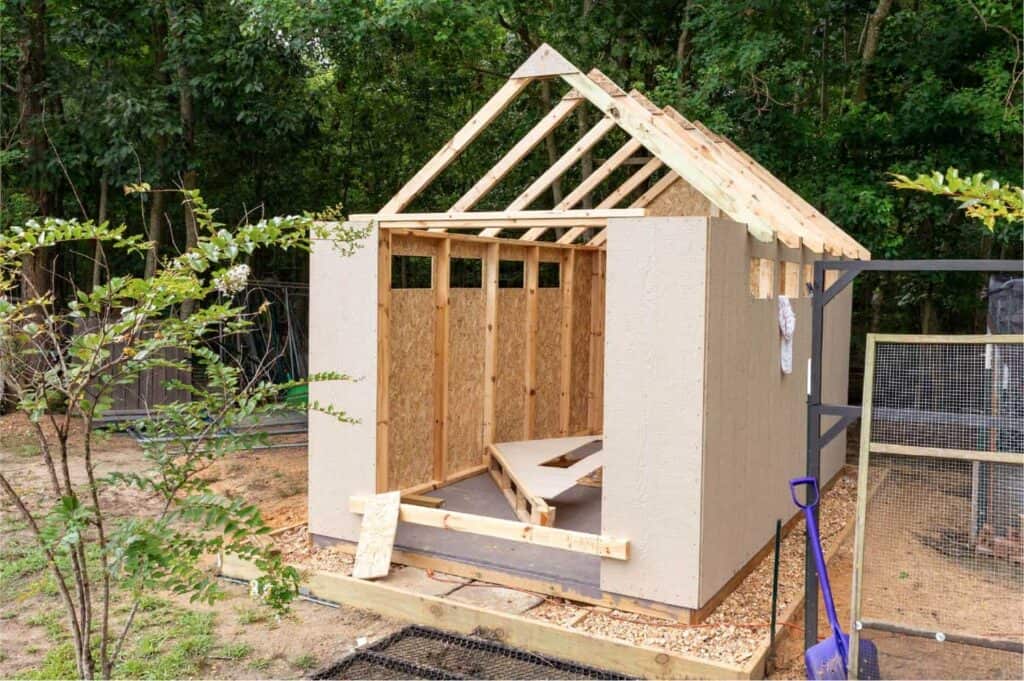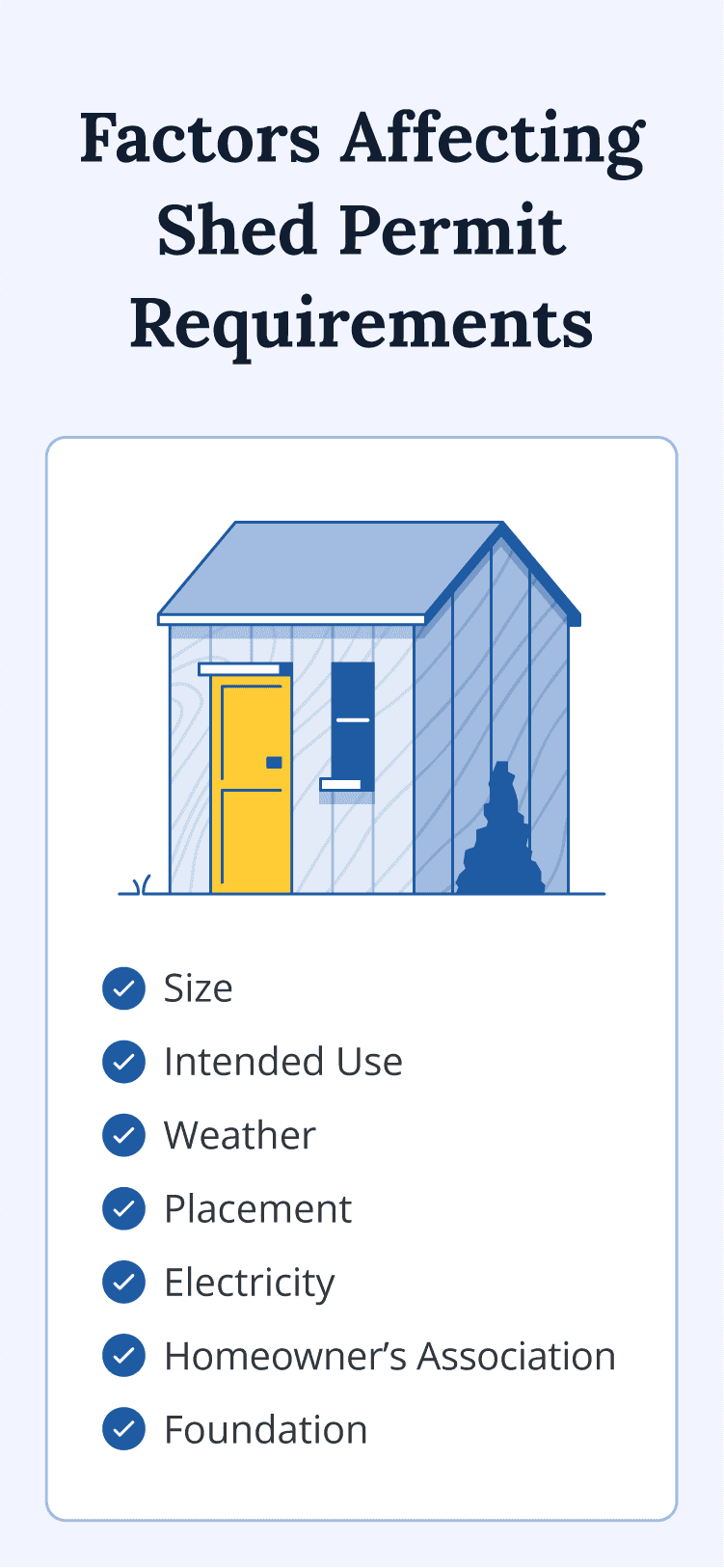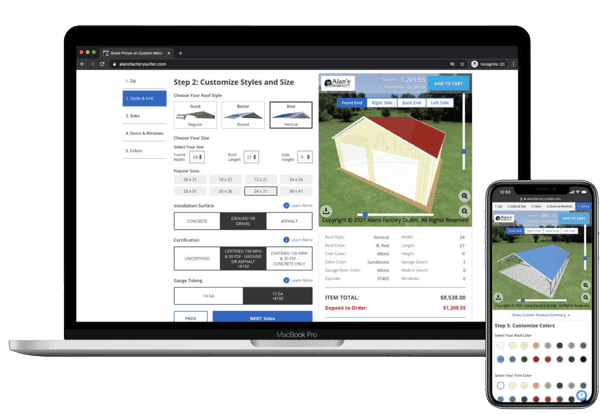Whether you’ll need a permit to build a shed will depend largely on the shed’s size, placement, intended use, electrical needs, and other factors.
Do you have extra space in your backyard? Little to no walking room in your garage? If so, you’re probably asking yourself how to build a shed. The first place you’ll want to start is determining whether or not you’ll need a shed permit.
In this guide, we’ll walk through determining factors, how to get a shed building permit, potential consequences of compliance issues, and a savings tip or two to help you throughout your construction process.
Let’s dive in.
What Is a Building Permit?
A building permit is when your local government authorizes you to build or alter any commercial or residential structure. Your local government distributes them, and they ensure your building adheres to all federal, state and local zoning regulations, building codes, and safety standards.
Once you begin the review process, your local government will ask you to formally submit your plans to your local building department for approval. After paying the associated fees, you must attend and pass scheduled compliance inspections to confirm your compliance and its structural integrity.

7 Factors That Determine If You Need a Permit To Build a Shed
The factors determining if you’ll need a permit to build a shed will shift depending on where you currently live. For instance, in states like California and Oregon, size is the biggest consideration. In others, placement, plumbing, and electrical requirements may come into play.
Below are the seven most common influences you’ll encounter when applying for your shed permit:

1. Size
In some regions, size is the most important factor for shed permit requirements. For instance, the largest shed you can build without a permit in California is a 120-square-foot structure. Anything bigger than that will require an official permit to proceed.
2. Placement
Shed permit requirements can also be contingent on its location. If you live in a more populated city, it may need to be a certain distance from other property lines. For example, some historical neighborhoods are known for outright banning sheds and tiny homes alike.
3. Intended Use
In most cases, shed conversions will require a permit to ensure the space you’re redesigning is habitable and up to code. Comparing a wooden vs. a metal shed shows that the former is great for simple storage, but likely won’t work as a guest house or home office. For the latter, consider metal shed insulation, plumbing, heating, and wiring throughout construction. Regulations vary by region, so it’s best to check with your building department directly.

4. Electricity
Electrical and plumbing work generally require permits of some kind. Sometimes, your local government can approve them with your shed permit. On other occasions, you’ll have to file a separate application. Again, reach out to your local building department to learn more about your local mandates.
5. Weather
Homeowners in areas with extreme weather conditions will be held to additional structural and safety standards. For example, regions with snowstorms, hurricanes, or tornadoes will require reinforced roofs, anchorage, and other more extreme measures to prioritize safety and longevity.
6. Foundation
Having a strong foundation ensures you will protect your shed from drainage issues, pest infestations, and shifting soil. There are many types of foundations available, but you’ll find that gravel shed foundations are common. Unlike pouring concrete, it’s easier to install and can handle minor shifts without cracking.
7. Homeowner’s Association
Those living in residential areas overseen by homeowners associations must abide by community rules and standards. That could mean sheds are prohibited altogether, or there are specific size and height requirements. Follow up with your HOA to learn about any potential limitations.
How to Get a Building Permit for a Shed
So you’ve done your research and found you do need to acquire a shed permit. No problem.
Use the below steps to navigate the process with ease:

1. Research Local Building Codes
Plan to do a bit of due diligence by educating yourself on your local building codes. This will help simplify the development plan since you’ll know what mistakes to avoid that could steepen shed building costs.
2. Create a Plan for Your Shed
You must submit your plans for approval before receiving a shed permit. Reviewers will need to see its intended location, dimensions, materials, and plumbing and electrical specifications in detail. If you can, have a professional drawing created to add a visual element. The clearer the picture you provide the better.
3. Fill Out the Permit Application
Visit your local government’s website or building department to find the application you’ll need to apply for a shed permit. Any fees associated with your application will also be due at this time. Before submitting, double-check all your information is correct and valid. Any discrepancies will only prolong your waiting period.
4. Schedule Inspections
Once you’ve been approved, you can begin construction. However, you’ll be asked to schedule inspections at various stages of progression to demonstrate compliance with local laws. The number of inspections your building needs depends on the size of your project and the nuances involved.
What Happens If You Build a Shed Without a Permit?
Disregarding permit mandates can lead to unfortunate and costly consequences. Remember, the purpose of these documents is to protect the well-being of you and your loved ones.
Here are some legal consequences of building a shed without a permit:
- Fines: Expect to pay extra fines when ignoring permit approval processes.
- Legal action: Your city will take legal action once it finds you’ve proceeded without consent.
- Demolition of your shed: Authorities will order the demolition of your structure if it doesn’t comply with building codes and zoning laws.
The legal implantations of forgoing shed permits aren’t worth the headaches they will cause. Be patient and you’ll reap the rewards of your meticulous planning.
Save Time and Money With a Pre-Assembled Shed
Don’t have the time to build from the ground up and need a hassle-free alternative? Check out our pre-assembled sheds to take a weight off your back. We have different types of sheds available to help narrow down what shed fits your needs.
Shed Permit FAQ
These frequently asked questions can help clarify any shed permit uncertainties you may have.
What size shed requires a permit?
Your location greatly impacts whether your shed will need a permit based on its size For example, California residents are restricted to less than 120 square feet before city officials enforce permit requirements.
Do I need a permit to run electricity to my shed?
Yes, shed constructs using electricity will likely require a permit. Your local government or contractor may include them within the shed permit, or they may be separate entirely.
How much does a building permit cost for a shed?
Building permits can cost as high as $150. Electrical and plumbing will increase the costs depending on your state of residence.
Do I need a permit to move a shed?
If your state has zoning regulations, then yes, you will need a permit to move a shed.
Do you need a permit for solar panels on sheds?
Yes. Due to electrical nuances, you will need a permit to add solar panels to your shed.




